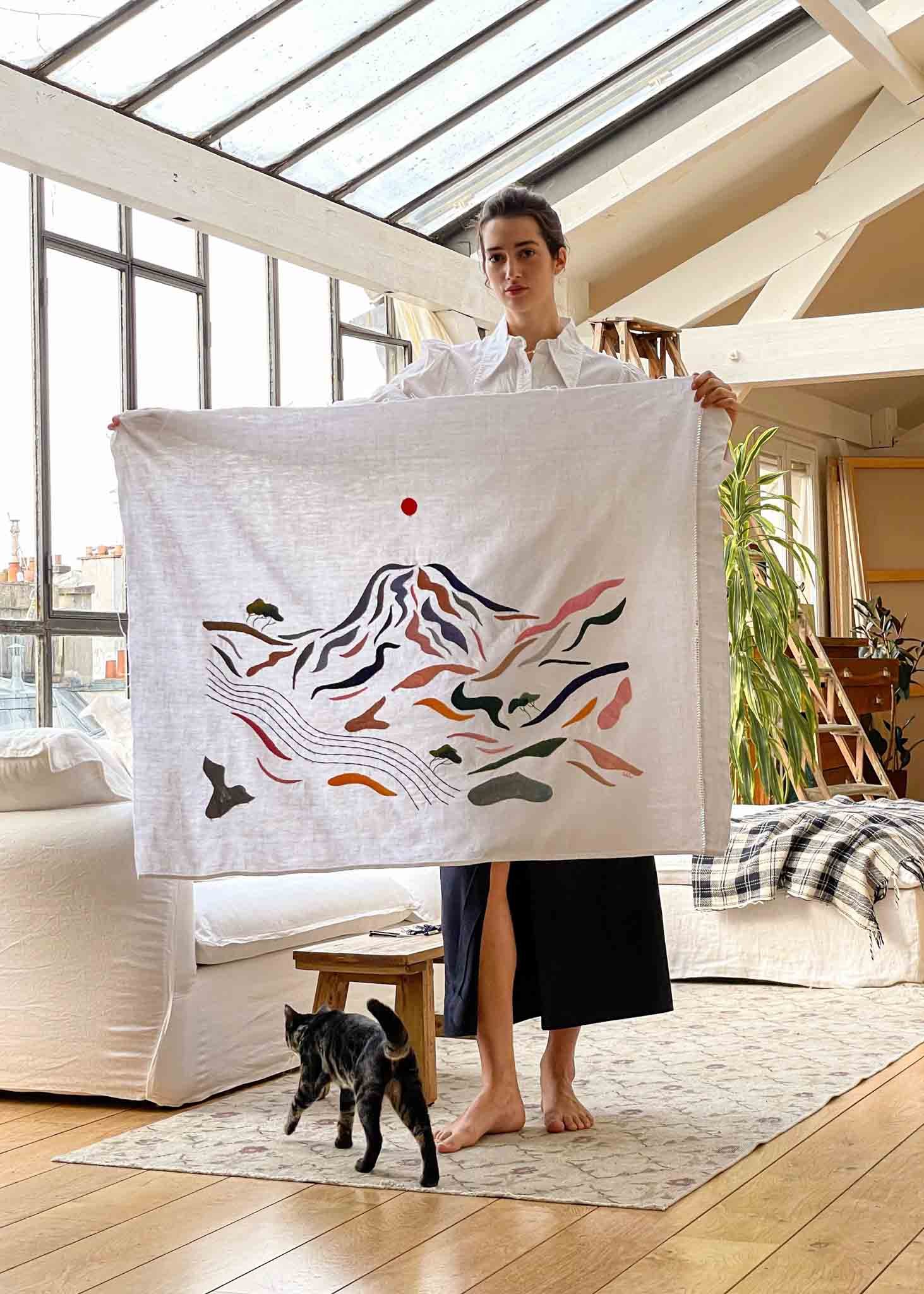Célia Bruneau
Please share a bit about yourself.
Hi, my name is Celia, I am an embroidery artist, I am doing drawing and painting, tufting and a bit of everything.
What first led you to textiles, and why did you specifically turn your attention to embroidery?
I guess I always had a connection to textiles since my childhood. My mom and grandmas were doing embroidery, crochet, knitting, were sewing clothes, costumes and hair bows with the scraps, and I would do the same for my cuddly toys, with not as much patience. I had access to all that, I was already dabbling in it and felt a certain passion for textile creation. So at 18 I did a fashion school and I was kind of bored there. I think I wanted more to be a multidisciplinary and free artist without knowing where to start. Sewing was not a passion for me, neither working in a company. During one of my end-of-studies internships - in which I did not have an exciting role, I decided one day to bring embroidery materials to occupy my hands and try to reproduce my drawings. I haven't been able to stop since.
Your work often features mountains and beautiful natural landscapes, exploring themes of nature. Could you share more about your relationship with nature and how nurturing this connection is for your artistic practice?
I am obsessed with mountains and volcanoes since my adolescence. I would always go to the French alps on summer holidays and remember being so happy there. Discovering the Italian volcanoes at 17 and walking on them was a huge revelation too. I like to represent places I love and where I feel good. I like the colors of nature and I also think that’s what I draw best!
We know you gravitate toward different mediums, such as painting. Can you share your thoughts on how this medium has influenced your approach to embroidery?
Painting is much more spontaneous than embroidery and I could not imagine being able to separate or to choose one of the two now. With painting I can bring a form of freedom to embroidery and my patterns, making it more blurry and alive.
How do you think the places, people, and textile traditions where you grew up are now manifesting in your art?
I grew up in the late 90´s in an apartment in La vallée de Chevreuse, a green Parisian suburb with no particularity. I had access to threads and textile but it was not part of a traditional form. But I think it gave me a sense of curiosity and pushed me to always create with my hands. I have always found things to do, to tinker with, to arrange with my hands and this probably comes from my childhood and my plays. Can you take us through your process? Do you have a favourite part of the creation process?
My creation process can starts from many different ways. It can come from a place I have been, form an intuition, a picture I took, a thought, and then depending on the medium I will start drawing shapes on paper with a pencil, or directly painting with gouache. Sometimes it can come from threads colors I like and want to use. I can be very meticulous about the composition of an embroidery and its finish look and the next day decide to embroider without markings. My favorite parts of the creation process is when what I'm doing becomes obvious and gives me a feeling of happiness - sometimes it only lasts a few seconds.
When it comes to the tactile aspect of your work and its connection with your body, how does the hands-on nature impact your overall happiness and well-being?
Doing things with my hands, touching and feeling are what make me happy. I found in embroidery a way of meditation and healing my inner body with a fairly repetitive gesture, a soft but percussive sound and pricks at the fingertips. Some go running, I stay at home, static, alone with my cats and embroider. Painting is different and can involves the whole body, I like these sensations too. I also deeply love to cook and sometimes feel similar sensations between embroidery and cooking - on my mind and at my fingertips.
Where do you think lies the biggest potential to preserve important local crafts in the contemporary context?
The best way to preserve local arts and crafts is to show them, to give them access and educational value. It is also about buying them in order to keep artists, artisans and culture alive.
What upcoming projects make you excited right now?
Travelling and creating my art everywhere I can!
Where and how can people engage more with your work?
On my website and my instagram, by sending love, thoughts and buying my work. I am always excited to receive requests for custom pieces, in different formats or on various supports. I also published a book about my embroidery work, you can find the link to buy it on my website. @_celiabruneau www.celiabruneau.com
Photos by Sophie Arancio, Mylène Comte, and Louis Thomas, as stated underneath each photo, and all the rest belong to Célia Bruneau




















